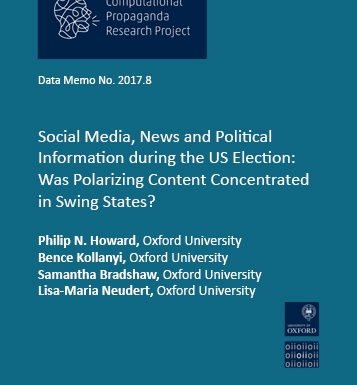Press: Elon Musk claims Twitter’s ban on Donald Trump amplified Trump’s voice among the right. That’s not quite true.
post,
17 May 2022

US voters shared large volumes of polarizing political news and information in the form of links to content from Russian, WikiLeaks and junk news sources. Was this low quality political information distributed evenly around the country, or concentrated in swing states and particular parts of the country? In this data memo we apply a tested dictionary of sources about political news and information being shared over Twitter over a ten day period around the 2016 Presidential Election. Using self-reported location information, we place a third of users by state and create a simple index for the distribution of polarizing content around the country. We find that (1) nationally, Twitter users got more misinformation, polarizing and conspiratorial content than professionally produced news. (2) Users in some states, however, shared more polarizing political news and information than users in other states. (3) Average levels of misinformation were higher in swing states than in uncontested states, even when weighted for the relative size of the user population in each state. We conclude with some observations about the impact of strategically disseminated polarizing information on public life.
Download here.
Philip N. Howard, Bence Kollanyi, Samantha Bradshaw, Lisa-Maria Neudert. “Social Media, News and Political Information during the US Election: Was Polarizing Content Concentrated in Swing States?” Data Memo 2017.8. Oxford, UK: Project on Computational Propaganda. demtech.oii.ox.ac.uk.
post,
17 May 2022
post,
19 April 2022
post,
5 September 2021
post,
12 August 2021